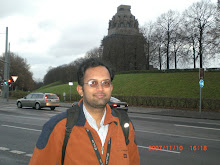Ettumanoor
Ettumanur is 30km from Kottayam station - Shiva kshetram.
Karasuran worshipped lord shiva at Chidambaram and lord shiva gave him 3 lingams. He carried the 2 lingams in his left & right and held the other below in his chin (Kazhuthu - tamil)
The lingam in his right hand was kept in Vaikkom - the lingam in between his chin n neck in Kaduthuruthi - and the other one in Ettumanoor.
Vaikkom, Kaduthuruthi and Ettumanoor all lie in a stratight line - Kaduthuruthi is middle - from kaduthuruthi vaikkom and ettumanoor is at 15kms. (So its Karasuran - Aaasura prathistai).
When shiva gave him the three lingams he asked sage patanjali to follow karasuran-karasuran after the prathistai gave the puja to sage patanjali - its believed that sage patanjali worshipped all the three lingams in same day starting from vaikkom, next kaduthuruthi and ettumanoor.If we have darshan of all the three temples on same day its auspicious.
In Ettumanoor, lord shiva is in fierce form (Aghoram). This temple came into existence before shakthi worship was introduced. There is no sannadhi for Goddess Parvathy. Behind ettumanoor-appan sannadhi there is a door which is locked and assumed to be lord parvathy(Aitheegam) - a vilakku is lit here. This door is not opened.
The srikovil is huge circular in shape, the namaskara mandapam is very huge with 16 pillars. All the pujas during festivals and auspicious days are done here. In this namaskaram mandapam 2 nandhis are there - one nandhi made off panchaloham and other of stone.
The thanthri for this temple are the same as in sabarimalai (Currently Sri Kandaru Maheshvararu, Sri Kandaru Mohanaru and Sri Kandaru Rajeevaru).
This temple is famous for Ezhara pon aana (seven n half elephants) - all made of gold.There are nor Keezhshanthi in this temple, here we have Moosad-moothathu (the early or elderly). They were given the temple administration by sage parasuramar. The thidambu during seeveli(sribali) is carried by them only. They cannot enter the garbagraham or touch the moolasthanam vigraham.
The Srikovil is facing west - there is a itheegam that lord here is in fierce form - aghoramurthy. During the datchayagam, lord shiva was not invited and denied the aavir bagam.Goddess parvathy went to datcha yagam inspite of lord shiva's advice and there by she was insulted by datchan (her father). So she fell in the homa-agni. Lord shiva became fierce - he destroyed the yaga-salai and danced with parvathys body - there by his aghora mugham was shown/seen. The rishis feared and consulted and informed Lord Mahavishnu, Lord Mahavishnu used his Sudharshana chakram and cut goddess parvathy's body into pieces. (one such part of her body - abdomen area fell in Chenganur - where the goddess has periods).
Lord shiva was pacified by Mahavishnu - here and hence he is worshipped here as Aghoramurthy here.
There is a shrine for Lord Dakshinamurthy in the srikovil itself - here he is in linga roopam. There is a sannadhi for Lord Ganapathy inside the srikovil, its on the right hand side of lord dakshinamurthy sannadhi. His darshan can be had when we circumblate the srikovil.
There are two entrances to the srikovil, one main entrance and one in south - through lord dakshinamurthy's side. The main entrance will be crowded during darshan time,hence thanthri's, melshanthi & moosad use the side entrance to enter main deity.
In the namaskara mandapam there is carving goddess parvathy as yakshi/durga. Also there is a sannadhi for iyyappan in the pragaram near the go-mukhi.
There is another separate small temple on the north-west corner for lord krishna(guruvayurappan).
The main worship for people when they come here is - offering oil to valiya villaku (periya vilakku - big lamp). The soot (vilakku kari) in this lamp when applied on ones forehead drives away all evils from him/her. Also applying on eyes with bakthi removes all eye ailments.
Besides the above, there are vazhipadus(pujai's) specific to the temple in the noticeboards.
Mahasivarathri is celebrated with much pomp & piousness.
The main utsavam for this temple is in the month of Maasi.
